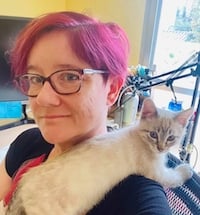Everything You Need To Know About Estonian VAT Refund

on January 12, 2023 • 6 minute read

We all know that as solopreneurs we wear many different hats in our business. We’re used to swapping roles between consultant, creative, administrator, director, and development manager…
But did you know, you also work part-time as a government tax collector?
No wonder you’re so busy!
Your role in collecting value-added tax (VAT) for the Estonian government is relatively lightweight, and you won’t need to give it a great deal of attention as a Xolo customer. However, you should understand the role of VAT in the commercial economy and the way it affects you, in order to understand how and why you comply with it (and why it’s so important to get proper receipts for everything.)
What is VAT, in Estonia and elsewhere?
VAT in the European Union and elsewhere (160 countries altogether, most of the OECD, but not the US), can be generally described as a consumption tax. It is assessed on the value added to goods and services. The Estonian VAT legislation was introduced in 1991 and is governed by the VAT Act of 2004, which transferred EU directives into local law.
Everyone in the supply chain adds value to a product as they produce and refine it, but ultimately, it's the final sale to the customer where the cost is charged, and the retailer collects the VAT on behalf of the government.
There are different rates of VAT depending on categories of transaction, as it is meant to levy the highest fees on transfer of inessential items, those regarded as luxuries. It is also subject to change, influenced by global events — for example, VAT on media outlets was reduced to https://www.emta.ee/en/business-client/taxes-and-payment/value-added-tax#since-01082022 to support the availability of quality journalism in Estonia in the ongoing information war related to the war in Ukraine, as well as other measures at that time in response to the escalating fuel crisis.
What are the implications of VAT for your Estonian e-resident business?
When you establish your Estonian e-resident business through Xolo or any other service provider, you will usually be automatically registered for VAT, and receive a unique VAT registration number (this starts with EE for Estonian businesses.)
You can theoretically trade without it, if your turnover is less than €40k, and there are some exemptions for those selling exclusively outside the EU, and/or providing digital services to consumers only (i.e. not business-to-business,) and if you don't buy services (e.g. Google, Facebook, etc) or goods (annually over €10 000) outside of Estonia. If you have no taxable sales yet, or your turnover doesn’t exceed €40k, registration as a VAT payer is voluntary.
However, depending on the location of your customers and suppliers and whether you will be paying VAT on the things you buy, it may well be registering anyway. That’s because, as a VAT registered business, you are not considered an end consumer in this equation — and as such, you can offset the Estonian VAT you pay against that which you collect on sales.
The VAT calculation: A bill or a refund?
As with most taxes which are in any way progressive, the idea is to match the amount paid exactly against what is owed. However just like with income tax this is difficult to do moment by moment, so some kind of estimate has to be paid periodically, with a less frequent adjustment to level things off.
As you go about your business, you will buy things from suppliers, like raw materials or consumables. Sometimes they may be able to deduct the VAT at source, if they are a specialist B2B supplier, and especially if they’re used to dealing with customers from outside the EU altogether.
If it’s a retailer though (perhaps you are buying some office consumables or some IT equipment for example) you will probably have to pay it up front like any other consumer. They will give you a receipt showing the VAT you have paid on that purchase.
When you raise an invoice to a business or a consumer through your Estonian e-Resident business, you may need to collect VAT, which is usually added to the invoice at the prevailing rate of 22%. The rules vary, depending on where they are located, and whether you are providing goods or services (or digital products, where specialist rules apply relating to the location of the customer where they are deemed to ‘consume’ their purchase.)
If you have business or retail customers in Estonia, the VAT will be automatically added to the invoice in the Xolo Leap portal.
Every month, Xolo will calculate for you the total amount of qualifying VAT you have spent on expenses, compared with the VAT you have collected for the government, and any positive balance (i.e. you collected more than you spent) will be paid to the government monthly.
Your Xolo representative will send you full details of how to make the payment in good time before the deadline, including the required references and payee. So all you have to do is set up and confirm the payment in to your bank website and sign it off, using your digital signature (PIN2), or whatever your bank requires to authenticate the transaction.
When do I charge VAT on an invoice though, and how do I work it out…?
As a Xolo Leap customer, the good news is that you don’t have to give this much thought, because it all happens automatically. VAT at the correct rate will be applied to the invoice, or not, as required.
Within the EU in particular, special rules apply, due to reciprocal agreements between member states. You only need to register for a VAT number in the country where you carry out taxable transactions, i.e. where you add the value to be taxed — in most cases, this will be Estonia, regardless of the location of your customers.
If you are invoicing another VAT registered business within the EU, but outside of Estonia, you will be prompted to enter their VAT number in the company details before you raise your first invoice to them. This is then checked in real time against the VIES VAT validation database, following which a green tick will appear.
(By the way, checking the VAT status of any trading partner in this way is a good idea anyway, as it confirms their identity and that they are properly registered with their country’s commercial systems. Assuming you are taking a deposit ahead of doing the work, it’s a good way to check them out, before doing business!)
How do I find a client’s VAT number?
The number you are looking for will consist of a 2-letter country code (as in EE for Estonia, DE for Germany, etc.) followed by a string of numbers… You can confirm the format for each country here.
When you are setting up a new customer to invoice it’s quite legitimate to request this along with other contact information, but in case your contact does not know the number offhand, it may well be found on a business contact page somewhere within their website. Be careful that you are using the correct registered address for the business entity you are billing, if they have multiple international branches; otherwise you might find it used as an excuse to delay paying you — remember, it's easy to raise invoices in different currencies through Xolo, to make it easy for your customers to pay you promptly.
If there’s no sign of the VAT number on the main site, but you know you’re dealing with an EU-based business, have a root around in the Privacy Policy or Terms of Use pages. These are often linked in tiny print at the very end of a home page or website footer.
Such legal notices generally define who they are as a legal party in business transactions (and sometimes you find out you’re not doing business with the entity you thought you were after all!) Hopefully somewhere in the first few sentences you will unearth a viable VAT number in the correct format, to run against VIES either on the link above, or directly in the Xolo Leap customer form.
How does Xolo manage the VAT calculation on my invoices?
Once your customer’s details are correctly entered, the VAT will be calculated automatically on every invoice you raise to that customer going forward, according to the following parameters:
- If they are an Estonian business or consumer, VAT will be added at the rate of 22% (unless the items or services you offer fall under the reduced rate or zero-rated category.)
- If the customer is a private client or business from the EU, and does NOT have a valid VAT number, you need to charge 22% VAT )
- If they are a VAT-registered business elsewhere in the EU, the invoice will add a row usually showing VAT 0% (reverse-charge)
- If they are a business elsewhere in the world, the invoice will add a row showing VAT 0%
Once again, you don’t have to worry about working this out, the portal automates all of it, and even adds up the columns for your customer’s convenience.
How does Xolo help me get my Estonian VAT refund?
If you have few or no clients in Estonia itself, then it’s perfectly possible that you will spend more VAT than you collect, if you buy services in Estonia - and you do buy the services of Xolo Leap!
As such, you are entitled to a refund.
Once this balance reaches €250, or once a year regardless, you can request Xolo to initiate a request for this to be returned to you, from the Estonian tax authorities.
Once again, this is all part of the Xolo Leap total package, and is not charged as an extra service, nor do you have to remember or do anything about it yourself. Xolo acts as your fiscal representative on this in other matters, and will validate the conformity of invoices and other documents, file the refund claim, follow up on any additional information requests, and contest any rejections by the tax authorities.
It’s all part of the Xolo service, which systematizes and automates the business administration backend to the maximum extent, in order to free you up to work on those billable products and services you can charge to your clients (with or without VAT, as applicable!)
To find out more about how to automate your own EU-based VAT-compliant company-of-one with Xolo:
About Maya
Maya Middlemiss is a freelance journalist and author, excited about the future of work, business, money, and technology. She operates her e-resident business through Xolo Leap, so that she can work frictionlessly with brands and publications all over the world, and she is the host of the Future is Freelance podcast. Exploring the social impact of technology on our changing world, and bringing those stories to life in an accessible and inclusive way, is her passion — because all of this is far too exciting to leave to the geeks. Maya is a 'digital slowmad', originally from London, presently living with her family in Eastern Spain.
Related blogs
Subscribe to
our newsletter
and get the latest updates and expert
business tips straight to your inbox.